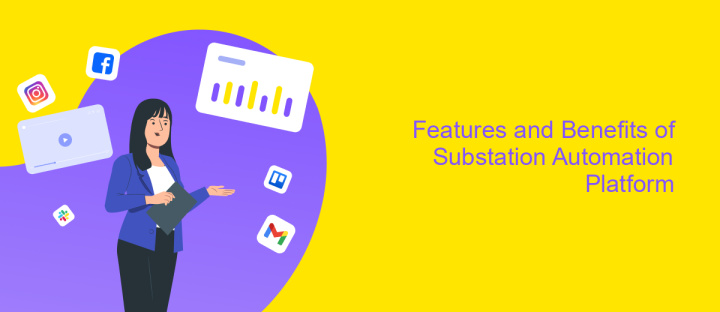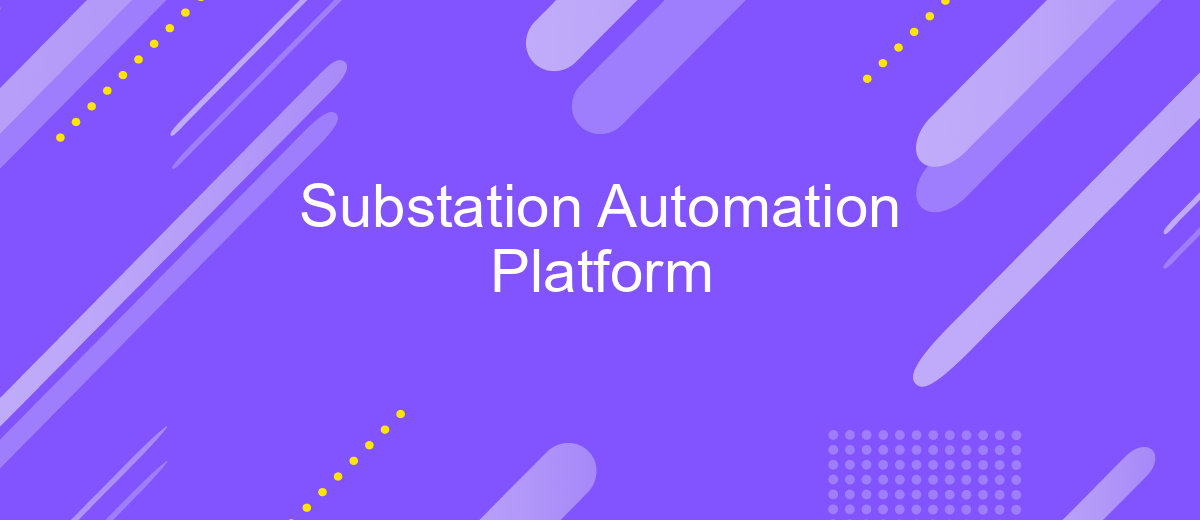Substation Automation Platform
Substation Automation Platforms are pivotal in modernizing electrical grids by enhancing efficiency, reliability, and safety. These platforms integrate advanced technologies to automate the monitoring, control, and protection of substations, ensuring seamless operation and swift response to grid demands. By enabling real-time data analysis and remote management, they play a crucial role in optimizing energy distribution and minimizing downtime, paving the way for smarter, more resilient power systems.
Introduction
The evolution of substation automation platforms has revolutionized the way electrical substations operate, enhancing efficiency, reliability, and safety. These platforms integrate advanced technologies to automate control, monitoring, and protection functions, enabling seamless communication between devices and systems. As the demand for smart grid solutions grows, substation automation platforms play a critical role in modernizing power infrastructure and optimizing energy management.
- Improved operational efficiency through real-time data acquisition and analysis.
- Enhanced reliability with automated fault detection and response mechanisms.
- Increased safety by minimizing human intervention and potential errors.
- Seamless integration with existing grid infrastructure for scalable solutions.
- Support for renewable energy sources and distributed energy resources.
As the energy sector continues to evolve, the adoption of substation automation platforms becomes essential for utilities aiming to meet the challenges of a dynamic energy landscape. By embracing these technologies, utilities can ensure a more resilient and adaptable power grid, capable of meeting the growing demand for energy while maintaining high standards of service quality and sustainability. This transition not only supports economic growth but also contributes to a cleaner and more efficient energy future.
Substation Automation Architecture

Substation automation architecture is a critical component in modernizing electrical grids, enabling efficient, reliable, and secure operations. This architecture typically comprises intelligent electronic devices (IEDs), communication networks, and centralized control systems. IEDs are responsible for monitoring and controlling various substation equipment, such as transformers and circuit breakers. They communicate data through robust communication networks, which can include Ethernet, fiber optics, or wireless technologies. These networks connect to centralized control systems, which analyze data and facilitate decision-making processes, enhancing the overall performance and reliability of the power grid.
Integration of various systems and devices within substation automation architecture is essential for seamless operations. Services like ApiX-Drive can streamline this integration process by automating data exchange between different platforms and applications. ApiX-Drive offers a user-friendly interface that simplifies the configuration of integrations, ensuring that data flows smoothly across the system. By utilizing such services, utilities can enhance their operational efficiency, reduce manual intervention, and improve the responsiveness of their automation systems. This integrated approach is vital for adapting to the dynamic demands of modern energy distribution networks.
Components of Substation Automation Platform

The Substation Automation Platform is a crucial component in modern electrical networks, ensuring efficient and reliable power distribution. It integrates various technologies and systems to monitor, control, and protect electrical substations. The platform enhances operational efficiency and provides real-time data for informed decision-making, which is essential for maintaining grid stability and reliability.
- Intelligent Electronic Devices (IEDs): These are the core components that perform protection, control, and monitoring functions.
- Communication Networks: Facilitate data exchange between IEDs and control centers, using protocols like IEC 61850.
- Human-Machine Interface (HMI): Provides operators with a visual interface to monitor and control substation operations.
- Supervisory Control and Data Acquisition (SCADA): A system that collects data from field devices and sends control commands.
- Data Management Systems: Store and process data for analysis and reporting purposes.
By integrating these components, the Substation Automation Platform ensures enhanced safety, reduced operational costs, and improved system resilience. It is a transformative technology that supports the transition towards smarter, more sustainable energy systems, enabling utilities to meet the growing demands of modern power grids.
Features and Benefits of Substation Automation Platform

Substation Automation Platforms (SAPs) have revolutionized the way modern electrical grids operate, offering enhanced efficiency and reliability. These platforms integrate advanced technologies to automate control processes, enabling real-time monitoring and management of electrical substations. By minimizing manual interventions, SAPs significantly reduce human error and improve operational safety.
One of the key features of SAPs is their ability to seamlessly integrate with existing infrastructure, providing utilities with a cost-effective solution for modernization. Through intelligent data analytics, these platforms offer predictive maintenance capabilities, allowing for proactive identification and resolution of potential issues before they escalate into costly failures.
- Enhanced grid reliability and stability
- Real-time monitoring and control
- Seamless integration with existing systems
- Predictive maintenance and reduced downtime
- Improved operational safety and efficiency
Incorporating a Substation Automation Platform not only enhances the functionality of electrical grids but also delivers substantial economic benefits. By optimizing asset performance and extending equipment life, SAPs contribute to significant cost savings. As energy demands continue to rise, these platforms play a crucial role in supporting sustainable and resilient power systems.


Applications and Use Cases of Substation Automation Platform
The Substation Automation Platform (SAP) is revolutionizing the way electrical substations operate by enabling real-time monitoring, control, and automation of electrical systems. Key applications of SAP include remote monitoring and diagnostics, which allow operators to detect anomalies and perform predictive maintenance, reducing downtime and enhancing reliability. Additionally, SAP facilitates advanced data analytics, providing insights into energy consumption patterns and optimizing energy distribution. This results in improved efficiency and reduced operational costs for utility companies.
Use cases of SAP extend to seamless integration with existing infrastructure and systems. Platforms like ApiX-Drive play a crucial role in this aspect by offering integration solutions that connect SAP with other enterprise systems and applications, ensuring smooth data flow and process automation. Such integrations enable utilities to streamline operations, enhance communication between devices, and improve decision-making processes. Furthermore, SAP supports grid modernization efforts, enabling the integration of renewable energy sources and contributing to the development of smart grids, ultimately leading to a more sustainable and resilient energy future.
FAQ
What is a Substation Automation Platform (SAP)?
How does a Substation Automation Platform improve operational efficiency?
What are the key components of a Substation Automation Platform?
How can a Substation Automation Platform be integrated with existing systems?
What are the benefits of using a Substation Automation Platform for remote management?
Routine tasks take a lot of time from employees? Do they burn out, do not have enough working day for the main duties and important things? Do you understand that the only way out of this situation in modern realities is automation? Try Apix-Drive for free and make sure that the online connector in 5 minutes of setting up integration will remove a significant part of the routine from your life and free up time for you and your employees.

